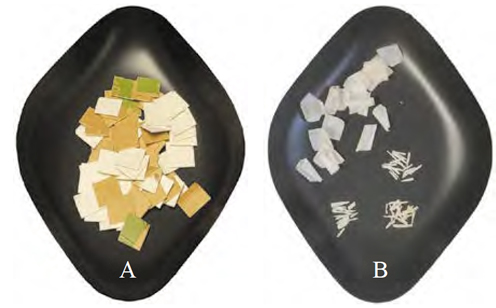EXPERIMENTAL ANALYSIS ON THE DEGRADATION OF PAPER BOXES FOR FOOD DELIVERY UNDER ANAEROBIC CONDITIONS
Main Article Content
Abstract
In Italy, the organic fraction accounts for 39% of all materials separately collected in municipal solid waste (ISPRA, 2022). The amount of cellulosic fractions and compostable bioplastics found in such a fraction is growing, also due to the increased use of these materials in the packaging sector as a replacement for conventional plastics. According to the Italian legislation, the waste (including packaging) with properties of biodegradability and compostability similar to organic waste should be delivered to composting and anaerobic digestion plants. These properties must be verified through the compliance with the European standards EN 13432:2002 and EN 14995:2007. However, the conditions described in such standards are not necessarily consistent with those found in full scale anaerobic treatment plants. This study completes the analysis on the degradability of paper-based packaging, the first part of which is reported in Fava et al. (2022), and it aims at evaluating the degradability under anaerobic conditions of two boxes used for food delivery when subjected to biological treatments together with the organic waste. Mono-digestion biochemical methane potential (BMP) tests were performed on two food delivery boxes, EN 13432:2002 certified, one made entirely of paper, and one made of paper laminated with a poly-lactic acid (PLA) film. Subsequently co-digestion tests with food waste were also carried out on the box with the PLA film under semi-continuous conditions, to better simulate the real scale anaerobic digestion plants. The BMP test results were analysed through kinetic models and the substrate degradability were compared with those obtained in the semi-continuous co-digestion tests. Subjected to BMP tests, the paper-only box exhibited a behaviour comparable to that of food waste, both in terms of degradability (>90%) and kinetics. The degradability of the PLA-laminated paper box film resulted lower, being equal to 75%. No residue was found when sieving the digestate at 2 mm after the tests. With regard to the semi-continuous tests performed on the box with PLA film, the methane production of the co-digestion reactor was lower by 3.8% (first part of the test) and by 2.5% (second part) compared to the methane production of the control reactor (fed with only food waste). If only the degradability of the packaging is considered, an increase can be observed from 66% in the first part of the test up to 75% in the second part. These values are comparable with the results obtained in the BMP tests, which shows that no synergistic effects between the two substrates occurred and there were also no significant acclimatisation phenomena. During the semi-continuous tests, the residues extracted from the digestate were mainly constituted by the PLA film. In particular, the weight of the non-degraded fraction (larger than 2 mm) resulted 2.8% of the total mass fed, corresponding to 26% of the total mass of inserted PLA. Altogether the results of this study indicate that paper is highly compatible with the anaerobic digestion process, however, the semi-continuous tests also highlighted the potential criticalities associated with the presence of undigested pieces of PLA. These criticalities could increase when considering anaerobic digesters operating under mesophilic conditions, which are even less effective in the degradation of bioplastics. At this purpose, focusing on packaging made of paper coupled with a compostable bioplastic, the ratio between paper and bioplastic can be a valid parameter to understand its compatibility with biological treatments: the lower the presence of bioplastic, the lower are generally the expected criticalities. However, it is essential to carry out experimental tests representative of the conditions of the full scale treatment plants, to verify the behaviour of the different materials and to identify any critical issues associated with their treatment.

